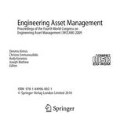Abstract
In Australia, road crash trauma costs the nation approximately A$18 billion annually whilst the United States estimates an economic impact of around US$230 billion on its network. Worldwide, the economic cost of road crashes is estimated to be around US$518 billion each year. It is therefore in both the sociological and economic interests of society that attempts are made to reduce, as much as possible, the level and severity of crashes. There are many factors that contribute to road crashes on a road network. The complex manner in which human behaviour, environmental and vehicle failure factors can interact in many critical driving situations, making the task of identifying and managing road crash risk within a road network quite difficult. While road authorities have limited control over external factors such as driver behaviour and vehicle related issues, some environmental factors can be managed such as road surface friction (or skid resistance of road surface). A riskbased method for managing road surface friction (i.e. skid resistance) is presented in this paper. The risk-based method incorporates ‘risk’ into the analysis of skid resistance and crash rate, by linking the statistical properties of skid resistance to the risk of a crash. By examining the variation of skid resistance values throughout the network, the proposed methodology can establish an optimal ‘investigatory level’ for a given level of crash risk, along with a set of statistical ‘tolerance’ bounds in which measured skid resistance values can be found. The investigatory level is a threshold level for triggering a detailed investigation of a road site to identify whether a remedial treatment should be made. A road category of normal demand, spray sealed surface, speed zone greater than 80 km and annual average daily traffic less than 5,000 vehicles was used in demonstrating the application of the method.
Access this chapter
Tax calculation will be finalised at checkout
Purchases are for personal use only
Preview
Unable to display preview. Download preview PDF.
References
Kuttesh, J.S. (2004) Quantifying the Relationship between Skid Resistance and Wet Weather Accidents for Virginia Data. Master Thesis, Virginia Polytechnic Institute and State University, Virginia, USA.
Weligamage J. (2006) Skid Resistance Management Plan. Road Asset Management Branch, Queensland Department of Main Roads, Queensland, Australia.
Austroads (2005) Guidelines for the Management of Road Surface Skid Resistance. AP-G83/05, Austroads, Sydney, Australia4
Seiler-Scherer L. (2004) Is the Correlation Between Pavement Skid Resistance and Accident Frequency Significant? Conference Paper STRC, Swiss Transport Research Conference, Switzerland.
Viner H.E., Sinhal R. & Parry A.R. (2005) Linking Road Traffic Accidents with Skid Resistance – Recent UK Developments. Proceedings of the International Conference on Surface Friction, Christchurch, New Zealand
Piyatrapoomi N, Weligamage J, Bunker J, & Kumar A. (2008) ‘Identifying relationship between skid resistance, road characteristics and crashes using probability-based risk approach’ The International Conference on Managing Road & Runway Surfaces to Improve Safety, 11 - 14 May 2008, Cheltenham England Percentage area where measured skid resistance falls below the investigatory curve
Piyatrapoomi N, Weligamage J, & Kumar A.(2008) ‘Probability-based method for analysing relationship between skid resistance and road crashes’10th International Conference on Application of Advanced Technologies in Transportation , May 27th -31st , 2008, Athens, Greece
Piyatrapoomi N, Weligamage J, & Bunker J. (2007) Establishing a Risk based Approach for Managing Road Skid Resistance. Australasian Road Safety Research, Policing & Education Conference 2007 ‘The Way Ahead'17 – 19 October 2007 Crown Promenade, Melbourne, Australia
Author information
Authors and Affiliations
Editor information
Editors and Affiliations
Rights and permissions
Copyright information
© 2010 Springer-Verlag
About this paper
Cite this paper
Piyatrapoomi, N., Weligamage, J. (2010). Risk-based approach for managing road surface friction of road assets. In: Kiritsis, D., Emmanouilidis, C., Koronios, A., Mathew, J. (eds) Engineering Asset Lifecycle Management. Springer, London. https://doi.org/10.1007/978-0-85729-320-6_10
Download citation
DOI: https://doi.org/10.1007/978-0-85729-320-6_10
Publisher Name: Springer, London
Print ISBN: 978-0-85729-321-3
Online ISBN: 978-0-85729-320-6
eBook Packages: EngineeringEngineering (R0)

